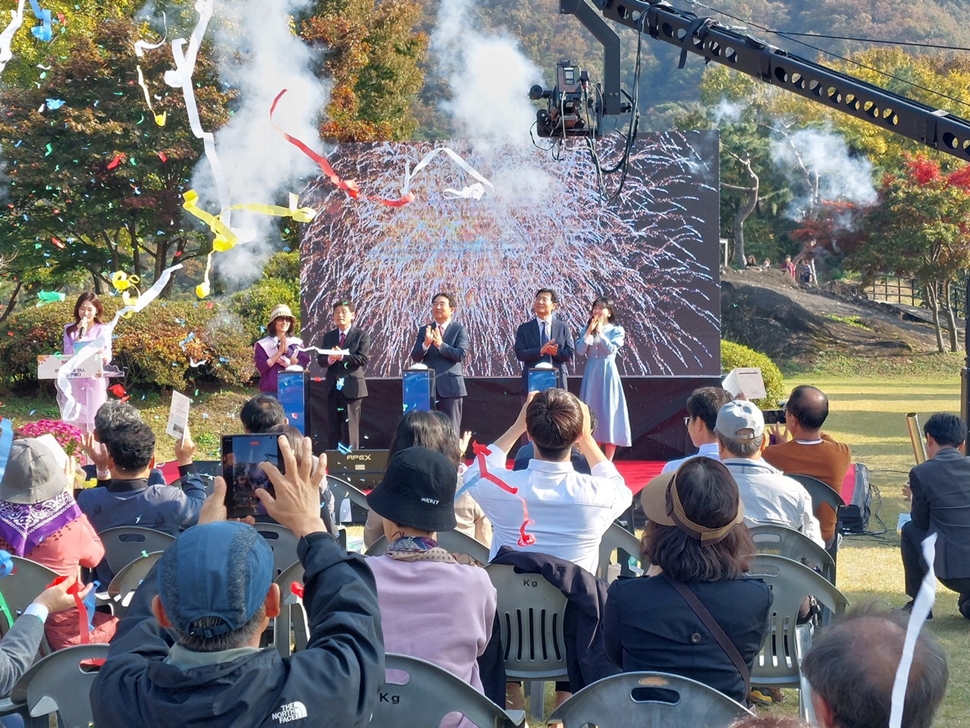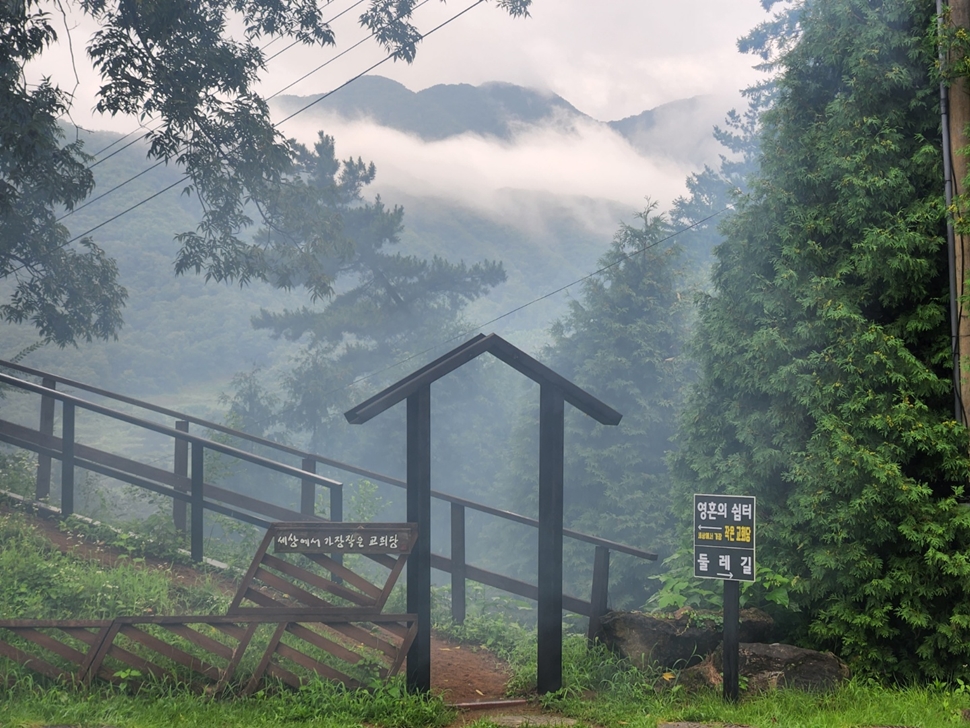[Nov] Driving up regional tourism to counter population losses
Date Nov 24, 2023
 Local government officials, residents and “honorary villagers” of Okcheon-gun County celebrate the region's population reaching 100,000 at the Aquatic Botanical Garden in Okcheon, Chungcheongbuk-do Province, October 30 (Photo by Okcheon-gun County)
Local government officials, residents and “honorary villagers” of Okcheon-gun County celebrate the region's population reaching 100,000 at the Aquatic Botanical Garden in Okcheon, Chungcheongbuk-do Province, October 30 (Photo by Okcheon-gun County)
Some 170 kilometers southeast of Seoul, an unusual celebration was held on October 30 in Okcheon-gun County in Chungcheongbuk-do Province.
The region’s residents, local government officials and 150 “honorary villagers” gathered in its key tourist destination, the Aquatic Botanical Garden, to celebrate the county’s population reaching 100,000. The number of people registered as residents in Okcheon-gun amounted to only 49,137 in September.
The county’s population has been aging, and shrinking, for decades. It once stood at 60,798 in 2000, declining to 54,025 in 2010. This year, it went below 50,000; and over one third of its current residents are more than 65 years old.
Then, how is it possible for such a rural, aging county to be celebrating the apparently rapid doubling of its population?
Since October last year, Okcheon saw 49,611 domestic travelers register as honorary villagers via initiatives backed by the Ministry of Culture, Sports and Tourism and the Korea Tourism Organization. The MCST and its affiliate the KTO started issuing digital tourist villager cards last October in exchange for travel discounts to boost the number of visitors to the region.
 The Aquatic Botanical Garden’s rural scenery in Okcheon-gun County, Chungcheongbuk-do Province (Photo by Aquatic Botanical Garden)
The Aquatic Botanical Garden’s rural scenery in Okcheon-gun County, Chungcheongbuk-do Province (Photo by Aquatic Botanical Garden)
Anyone who resides in Korea and has a mobile phone registered in their name can get a digital tourist villager card issued free of charge via Visit Korea’s mobile application. The mobile card contains a QR code, which serves as a discount coupon for some designated key tourist destinations, cultural experience centers, local coffee shops and restaurants.
Okcheon and Pyeongchang, a county in Gangwon-do, were the first two areas selected for the pilot project that has exceeded expectations.
Okcheon saw over 20,000 honorary villagers registered in the first five months, and the figure grew to near 50,000, exceeding the region’s actual population within 13 months. The local government estimates it will surpass 51,000 by the end of the year.
 A promotional image for KTO's digital tourist villager card (Photo by Korea Tourism Organization)
A promotional image for KTO's digital tourist villager card (Photo by Korea Tourism Organization)
Building on this success, the project has grown to include 15 cities and counties across the country in less than a year. That number will expand to up to 30 regions next year, as several municipalities have shown interests in joining the initiative, offering numerous benefits and programs for travelers, according to the KTO.
Korea is facing a serious demographic crisis due to record-low birthrates which have now given it the world’s lowest average number of children born to a woman in her reproductive years: 0.78. The number of Koreans opting not to marry or have children has been growing – with the high cost of child rearing and changing views toward marriage often cited as reasons.
Tourism might provide one solution for the country’s demographic crisis. The Korea Culture and Tourism Institute studied how an influx of tourists can impact a region with declining population economically. According to the report it issued in 2022, a community can generate enough consumption to offset a declining population if it attracts 41 visitors for every person it loses, while a 1 percent increase in tourism expenditures can lead to a 0.18 percent increase in the employment rate.
Based on these findings, the KTO has announced that relevant government authorities are planning to continue helping local municipalities attract visitors through the tourist villager initiative and that it will be expanded to include foreign nationals while offering travelers a wider range of benefits in the long-term.

The Ministry of Culture, Sports and Tourism's "Korea Here & Now" work can be used under the condition of "Public Nuri Type 1 (Source Indication)."




